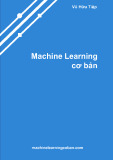
Neuro-Fuzzy
Modeling
and
Control
JYH-SHING
ROGER
JANG,
MEMBER,
IEEE, AND
CHUEN-TSAI
SUN,
MEMBER,
IEEE
Fundamental and advanced developments
in
neum-fuzzy syner-
gisms for modeling and control are reviewed. The essential part of
neuro-fuuy synergisms comes from a
common
framework called
adaptive networks, which unifies both neural networks and fuzzy
models. The fuuy models under the framework of adaptive net-
works is called Adaptive-Network-based Fuzzy Inference System
(ANFIS),
which possess certain advantages over neural networks.
We introduce the design methods for ANFIS
in
both modeling and
control applications. Current problems and future directions for
neuro-fuzzy approaches are also addressed.
modeling.
neuro-fuzzy
control.
ANFIS.
Keywords-
Fuuy
logic,
neural
networks,
fuzzy
modeling,
neuro-fuzzy
I.
INTRODUCTION
In
1965,
Zadeh published the first paper on
a
novel
way of characterizing nonprobabilistic uncertainties, which
he called “fuzzy sets”
[116].
This year marks the 30th
anniversary of fuzzy logic and fuzzy set theory, which
has now evolved into a fruitful area containing various
disciplines, such as calculus of fuzzy if-then rules, fuzzy
graphs, fuzzy interpolation, fuzzy topology, fuzzy rea-
soning, fuzzy inferences systems, and fuzzy modeling.
The applications, which are multi-disciplinary in nature,
includes automatic control, consumer electronics, signal
processing, time-series prediction, information retrieval,
database management, computer vision, data classification,
decision-making, and
so
on.
Recently, the resurgence of interest in the field of artificial
neural networks has injected a new driving force into
the “fuzzy” literature. The back-propagation learning rule,
which drew little attention till its applications to artificial
neural networks was discovered, is actually an universal
learning paradigm for any smooth parameterized models,
including fuzzy inference systems (or fuzzy models).
As
a result, a fuzzy inference system can now not only take
linguistic information (linguistic rules) from human experts,
but also adapt itself using numerical data (input/output
pairs) to achieve better performance. This gives fuzzy
Manuscript received March
30,
1994; revised November 28, 1994. This
work was supported
in
part by NASA Grant NCC 2-275, MICRO Grant
92-180,
EPRl
Agreement RP 8010-34, and in part by the BISC program.
J.4.
Jang
is
with the Control and Simulation Group, The Mathworks,
Inc., Natick, MA 01760 USA.
C.-T.
Sun is with the Department of Computer and Information Science,
National Chiao Tung University, Hsinchu, Taiwan.
IEEE
Log
Number 940830
1.
inference systems an edge over neural networks, which
cannot take linguistic information directly.
In this paper, we formalize the adaptive networks as a
universal representation for any parameterized models.
Under this common framework, we reexamine back-
propagation algorithm and propose speedup schemes
utilizing the least-squared method. We explain why neural
networks and fuzzy inference systems are all special
instances of adaptive networks when proper node functions
are assigned, and all leaming schemes applicable to
adaptive networks are also qualified methods for neural
networks and fuzzy inference systems.
When represented as an adaptive network, a fuzzy in-
ference system is called adaptive networks-based fuzzy
inference systems
(ANFIS).
For three of the most com-
monly used fuzzy inference systems, the equivalent
ANFIS
can be derived directly. Moreover, the training of
ANFIS
follows the spirit of the
minimum disturbance principle
[lo91
and is thus more efficient than sigmoidal neural
networks.
Once a fuzzy inference system
is
equipped with learning
capability, all the design methodologies for neural network
controllers become directly applicable to fuzzy controllers.
We briefly review these design techniques and give related
references for further studies.
The arrangement of this article is as follows. In Section
11,
an in-depth introduction to the basic concepts of fuzzy sets,
fuzzy reasoning, fuzzy if-then rules, and fuzzy inference
systems are given. Section
111
is devoted to the formaliza-
tion of adaptive networks and their leaming rules, where the
back-propagation neural network and radial basis function
network are included as special cases. Section IV explains
the
ANFIS
architecture and demonstrates its wperiority
over back-propagation neural networks.
A
number of design
techniques for fuzzy and neural controllers
is
described in
Section
V.
Section
VI
concludes this paper by pointing out
current problems and future directions.
11.
REASONING, AND FUZZY
MODELS
FUZZY SETS, FUZZY RULES, FU7.y
This section provides a concise introduction to and a
summary of the basic concepts central to the study of fuzzy
sets. Detailed treatments
of
specific subjects can be found
in the reference list.
378
0018-9219/95$04.00
0
1995
IEEE
PROCEEDINGS
OF
THE
IEEE,
VOL.
83,
NO. 3,
MARCH
1995

MF
on
a
diwntc
X
I’
I
MF
an
a
continuous
x
X
=
numbcr
of
courses
X
=
age
Fig.
1.
“about
50
years
old.”
(a)
A
=
“appropriate number
of
courses
taken”
(b)
B
=
A.
Fuzzy Sets
example, a classical set
A
can be expressed as
A
classical set
is
a set with a crisp boundary. For
A
=
{z
I
z
>
6)
(1)
where there is
a
clear, unambiguous boundary point
6
such that if
z
is greater than this number, then
z
belongs
to the set
A,
otherwise
z
does not belong
to
this set.
In contrast to a classical set, a
fuzzy set,
as the name
implies, is a set without a crisp boundary. That is, the
transition from “belonging to a set” to “not belonging to a
set” is gradual, and this smooth transition is characterized
by membership functions that give fuzzy sets flexibility
in modeling commonly used linguistic expressions, such
as “the water is hot” or “the temperature is high.”
As
Zadeh pointed out in
1965
in
his seminal
paper
entitled
“Fuzzy Sets”
[
1
161,
such imprecisely defined sets or classes
“play an important role in human thinking, particularly
in the domains of pattem recognition, communication of
information, and abstraction.” Note that the fuzziness does
not come from the randomness of the constituent members
of the sets, but from the uncertain and imprecise nature of
abstract thoughts and concepts.
Dejnition
1:
Fuzzy
Sets
and Membership Functions
If
X
is a
collection of objects denoted generically by
z,
then a fuzzy
set
A
in
X
is defined as a set of ordered pairs:
p~(z)
is called the membership function
(MF
for short) of
2
in
A.
The MF maps each element of
X
to a continuous
membership value (or membership grade) between
0
and
1.
0
Obviously the definition
of
a fuzzy set is a simple
extension of the definition of a classical set in which
the characteristic function is permitted to have continuous
values between
0
and
1.
If the value
of
the membership
function
p.~(z)
is restricted to either
0
or 1, then
tl
is
reduced to a classical set and
p.A(r)
is the characteristic
function of
A.
Usually
X
is referred to as the “universe of discourse,”
or simply the “universe,” and it may contain either discrete
objects or continuous values. Two examples
are
given
below.
Example
1:
Fuuy Sets
with
Discrete
X.
Let
X
=
{
1,
2,
3,
4,
5.
6,
7,
81
be the set of numbers of courses a student
may take in
a
semester. Then the fuzzy set
A
=
“appropriate
number of courses taken” may
be
described as follows:
A
={(11~.1),(2,0.~~,(~l~~.~)l(~,
I),
(5,0.9),(6,0.5),(7,0.2),(8,0.1)}.
This fuzzy set is shown in Fig. ](a).
0
Example
2:
Fuzzy Sets with Continuous
X.
Let
X
=
R+
be the set of possible ages for human beings. Then the fuzzy
set
B
=
“about
50
years
old”
may be expressed as
B
=
{(z.,u”B(.r)
15
E
X}
where
This is illustrated in Fig. l(b).
U
An alternative way of denoting a fuzzy set
A
is
p~(z,)/~,,
if
X
is discrete.
(3)
A
=
XT€?X-
S,
p~A(:r)/rl
if
x
is continuous.
{
The summation and integration signs m
(3)
stand for the
union
of
(2.
p~
(
.E))
pairs; they do not indicate summation
or integration. Similarly,
“/”
is only a marker and does
not imply division. Using this notation, we can rewrite the
fuzzy sets in Examples
1
and
2
as
A
=
O.l/l
+
0.3/2
+
0.8/3
+
1.0/1
+
0.9/5
+
0.5/6
+
0.2/7
+
0.1/8,
and
respectively.
From Example
1
and
2,
we see that the construction of
a fuzzy set depends
on
two things: the identification of
a
suitable universe of discourse and the specification of
an
ap-
propriate membership function. It should be noted that the
specification of membership functions is quite
subjective,
which means the membership functions specified for the
same concept (say, “cold”) by different persons may vary
considerably.
This
subjectivity comes from the indefinite
nature of abstract concepts and has nothing to do with
randomness. Therefore the
subjectivity
and
nonrandomness
of fuzzy sets is the primary difference between the study
of fuzzy sets and probability theory, which deals with
objective treatment of random phenomena.
Corresponding to the ordinary set operations of union,
intersection, and complement, fuzzy sets have similar oper-
ations, which were initially defined in Zadeh’s paper
[116].
Before introducing these three fuzzy set operations, first
we will define the notion of containment, which plays
a
central role in both ordinary and fuzzy sets. This definition
of containment
is,
of
course, a natural extension
of
the case
for ordinary sets.
JANG AND
SUN:
NEURO-FUZZY MODELING AND CONTROL
379

two
fuzzy
gets
A,
B
"A
OR
B"
"NOT
A
I'
"A
AND E"
I
't
Fig.?.
(b)
4;
(c)
A
U
8;
(d)
-4
fl
B.
Operations on fuzzy
sets:
(a)
two
fuzzy
sets
A
and
B;
Definition
2:
Containment or Subset
Fuzzy set
A
is
con-
tained
in fuzzy set
B
(or,
equivalently,
A
is a
subset
of
B,
or
A
is smaller than
or
equal to
B)
if and only if
PA(%)
5
p~(x) for
all
z.
In symbols,
(4)
0
Definition
3:
Union (disjunction)
The
union
of two fuzzy
sets
A
and
B
is a fuzzy set
C,
written as
C
=
A
U
B
or
C
=
A
OR
B,
whose
MF
is related to those of
A
and
B
by
A
c
B
e
PA(x)
5
PB(x).
pC(X)
=
"(bA(Z),bB(x))
=
PA(z)
VPB(x).
(5)
U
As pointed out by Zadeh
[116],
a more intuitive and
appealing definition of union is the smallest fuzzy set
containing both
A
and
B.
Alternatively, if
D
is any fuzzy
set that contains both
A
and
B,
then it
also
contains
AU
B.
The intersection of fuzzy sets can be defined analogously.
Definition
4:
Intersection (conjunction)
The
intersection
of two fuzzy sets
A
and
B
is
a fuzzy set
C,
written as
C
=
A
fl
B
or
C
=
A
AND
B,
whose
MF
is related
to those of
A
and
B
by
PC(z)
=
min(pA(x),
pL?(z))
=
pA(z)
A
PB(x).
(6)
0
As in the case of the union, it is obvious that the
intersection of
A
and
B
is
the largest fuzzy set which is
contained in both
A
and
B.
This reduces to the ordinary
intersection operation if both
A
and
B
are nonfuzzy.
Definition
5:
Complement (negation)
The
complement
of
fuzzy set
A,
denoted by
~(TA,
NOT
A),
is defined as
px(x)
=
1
-
PA(Z).
(7)
0
Fig.
2
demonstrates these three basic operations:
1)
illus-
trates two fuzzy sets
A
and
B,
2)
is the complement of
A,
3) is the union of
A
and
B,
and
4)
is the intersection
of
A
and
B.
Note that other consistent definitions for fuzzy AND and
OR
have been proposed in the literature under the names
"T-norm" and "T-conorm" operators
[
161,
respectively.
Except for min and max, none of these operators satisfy
the law of distributivity:
pAU(BnC)(2)
=
/L(AUB)n(AUC)(X),
PAn(BUC)(l)
=
P(AI~B)V(A"C)(~).
However, min and max do incur some difficulties in ana-
lyzing fuzzy inference systems. A popular alternative is to
use the probabilistic AND and
OR:
pAnB(z)
=
/LA(x)PB(z).
pAuB(z)
=pA(z)
-k
PB(T)
-
PA(x)PB(z).
In the following, we shall give several classes of param-
eterized functions commonly used to define
MF's.
These
parameterized MF's play an important role in adaptive
fuzzy inference systems.
Definition
6:
Triangular
MF's
A
triangular
MF
is spec-
ified by three parameters
{a,
b.
c},
which determine the
z
coordinates of three comers:
triangle(:c;
a,
b,
c)
=
rnax (min
(-,-),o).
2-a
c-x
(8)
h-U
C-b
Fig. 3(a) illustrates an example of the triangular
MF
defined
0
Definition
7:
Trapezoidal
MF's
A
trapezoidal
MF
is
by
triangle(x;
20,
60,
80).
specified by four parameters
{U,
b.
c.
d}
as follows:
trapezoid(.c:
a,
b,
c.
d)
=
max
(rriin
(E,
x-a
1,
----)
d-3.
,(I).
(9)
d-(.
Fig. 3(b) illustrates an example of a trapezoidal
MF
defined
by
trapezoid(x;
10,
20,
60,
95).
Obviously, the triangular
0
Due to their simple formulas and computational effi-
ciency, both triangular
MF's
and trapezoidal
MF's
have
been used extensively, especially in real-time implementa-
tions. However, since the MF'\ are composed of straight
line segments, they are not smooth at the switching points
specified by the parameters. In the following we introduce
other types
of
MF's
defined by smooth and nonlinear
functions.
Definition
8:
Gaussian
MF's
A
Gaussian
MF
is specified
by two parameters
{g.
c}:
MF
is
a special case of the trapezoidal
MF.
gaussian(2;
f7*
c)
=
,{-[(x-c)/~IL}
(10)
where
c
represents the
MF's
center and
c
determines the
MF's width. Fig. 3(c) plots a Gaussian
MF
defined by
gaussian(x;20,50).
0
380
PROCEEDINGS
OF
THE IEEE,
VOL.
83,
NO.
3,
MARCH
1995

hianguler
MF
X
(a)
Gaussian
MF
bell
MF
X
Fig. 3.
Examples
of
various
classes
of
MF’s:
(a)
trrangle
(x;
20, 60,
80);
(b)
trapezoid
(x;
IO,
20,
60,
95);
(c)
gaussic~n
(x;
20,
50);
(d) bell
(x;
20,
4,
50).
Deifinition
9:
Generalized Bell
MF’s
A
generalized bell
MF
(or
bell MF
)
is specified by three parameters
{a,
b,
c}:
where the parameter
b
is usually positive. Note that this MF
is a direct generalization of the Cauchy distribution used in
probability theory. Fig.
3
illustrates a generalized bell MF
U
A
desired generalized bell MF can be obtained by a
proper selection of the parameter set
{a.
b.
c}.
Specifically,
we can adjust
c
and
a
to vary the center and width
of the MF, and then use
b
to control the slopes at the
crossover points. Fig.
4
shows the physical meanings of
each parameter in a bell MF.
Deifinition
IO:
Sigmoidal
MF’s
A
sigmoidal MF
is de-
fined by
defined by
bel@;
20,
4,
50).
(12)
1
1
+
exp
[-a(.
-
c)]
sigmoid(x;
a.
c)
=
where
a
controls the slope at the crossover point
x
=
c.
0
Depending on the sign of the parameter
a,
a sigmoidal
MF is inherently open right or left and thus is appropriate
for representing concepts such as “very large” or “very
negative.” Sigmoidal functions of this kind are employed
widely as the activation function of artificial neural net-
works. Therefore, for a neural network to simulate the
behavior of a fuzzy inference system, the first problem we
face is how to synthesize
a
close MF through a sigmoidal
function. There are two simple ways to achieve this: one is
Fig.
4.
Physical meaning
of
parameters in
a
generalized
bell
function.
to take the product of two sigmoidal
MF’s;
the other is to
take the absolute difference of two sigmoidal MF’s.
It should be noted that the list of MF’s introduced in this
section is by no means exhaustive; other specialized MF’s
can be created for specific applications if necessary. In
particular, any types of continuous probability distribution
functions can be used as an MF here, provided that a set of
parameters are given to specify the appropriate meanings
of the MF.
B.
Fuzzy If-Then Rules
conditional statement
)
assumes
the
form
A
fuzzy if-then rule (fuzzy rule, fuzzy implication,
or
fuzzy
if
x
is
A
then
y
is
B
(13)
where
A
and
B
are linguistic values defined by fuzzy sets
on
universes of discourse
X
and
Y,
respectively. Often
“x
is
A”
is called the
antecedent
or
premise
while
“y
is
B”
is called the
consequence
or
conclusion.
Examples of
fuzzy if-then rules are widespread in our daily linguistic
expressions, such as the following:
If pressure is high then volume is small.
If the road is slippery then driving is dangerous.
If a tomato is red then it is ripe.
If the speed is high then apply the brake
a
little.
Before we can employ fuzzy if-then rules to model
and analyze a system, we first have to formalize what is
meant by the expression “if
x
is
A
then
y
is
B,”
which
is sometimes abbreviated as
.4
+
R.
In essence, the
expression describes a relation between two variables
x
and
y;
this suggests that a fuzzy if-then rule be defined as a
binary
fuzzy
relation
R
on the product space
X
x
Y.
Note
that a binary fuzzy relation
R
is an extension of the classical
Cartesian product, where each element
(x,y)
E
X
x
Y
is
associated with a membership grade denoted by
p~(x,
y).
Altematively, a binary fuzzy relation
R
can be viewed as
a
fuzzy set with universe
X
x
Y,
and this fuzzy set is
characterized by a
two-dimensional
MF
p~
(
x.
y
).
Generally speaking, there are two ways
to
interpret the
fuzzy rule
A
-+
B.
If we interpret
A
--+
B
as
‘*A
coupled
with
B,”
then
R=A+B=AxB=
JANG AND SUN: NEURO-FULLY MODELING AND CONTROL
381

B
Tx
Yx
(a)
(b)
Two interpretations
of
fuzzy implication: (a)
A
coupled
Fig.
5.
with
B;
(b)
A
entails
E.
where
i
is a fuzzy
AND
(or
more generally, T-norm)
operator and
A
-+
B
is used again to represent the fuzzy
relation
R.
On the other hand, if
A
-+
B
is interpreted
as
“A
entails
B,”
then
it
can be written as four different
formulas:
Material implication:
R
=
A
-+
B
=
TA
U
B.
Propositional calculus:
R
=
A
+
B
=
-A
U
(A
n
B).
Extended propositional calculus:
R
=
A
-+
B
=
(’A
n
’B)
U
B.
Generalization
of
modus ponens:
p~(x,y)
=
~up{c(p~(x)*c
5
p~(y)andO
5
c
I
l},
where
R
=
A
-+
B
and
jl
is a T-norm operator.
Though these four formulas are different in appearance,
they all reduce to the familiar identity
A
-+
B
TA
U
B
when
A
and
B
are propositions in the sense of two-valued
logic. Fig.
5
illustrates these two interpretations of a fuzzy
rule
A
-+
B.
Here we shall adopt the first interpretation,
where
A
-+
B
implies
“A
coupled with
B.”
The treatment
of the second interpretation can be found in
[35],
[50],
[Sl].
C.
Fuzzy
Reasoning (Approximate Reasoning)
Fuzzy
reasoning
(also known as
approximate reasoning)
is an inference procedure used to derive conclusions from
a set of fuzzy if-then rules and one or more conditions.
Before introducing fuzzy reasoning, we shall discuss the
compositional rule
of
inference
[
1171, which
is
the essential
rationale behind fuzzy reasoning.
The compositional rule of inference is a generalization of
the following familiar notion. Suppose that we have a curve
y
=
f(z)
that regulates the relation between
x
and y. When
we are given
z
=
a,
then from
y
=
f(x)
we can infer that
y
=
b
=
f(a);
see Fig. 6(a).
A
generalization of the above
process would allow
a
to be an interval and
f(z)
to be
an interval-valued function, as shown in Fig. 6(b). To find
the resulting interval y
=
b
corresponding
to
the interval
x
=
a,
we first construct a cylindrical extension of
a
(that
is, extend the domain of
a
from
X
to
X
x
Y)
and then
find its intersection
I
with the interval-valued curve. The
projection of
I
onto the y-axis yields the interval y
=
b.
Going one step further in our generalization, we assume
that
A
is a fuzzy set of
X
and
F
is a fuzzy relation on
X
x
Y,
as
shown in Fig. 7(a) and
(b).
To
find the resulting
fuzzy set
B,
again, we construct a cylindrical extension
c(A)
with base
A
(that is, we expand the domain of
A
from
X
to
X
x
Y
to get
c(A)).
The intersection of
c(A)
and
F
(Fig. 7(c)) forms the analog of the region of intersection
I
(a)
(b)
Fig. 6.
Derivation
of
y
=
b
from
.c
=
a
and
y
=
f(.c).
(a)
a
and
b
are
points,
y
=
f(z)
is a
curve,
(b)
a
and
b
are
intervals,
y
=
f(s)
IS
an interval-valued function.
in Fig. 6(b). By projecting
c(A)
n
F
onto the y-axis, we
infer y as a fuzzy set
B
on the y-axis, as shown in Fig. 7(d).
Specifically, let
PA,
pc(~),
p~,
and
p~
be the
MF’s
of
A,
c(A),
B,
and
F,
respectively, where
p,(~)
is
related to
p~
through
Y)
=
pA(X).
Then
This formula is referred to as
ma-min composition
and
B
is
represented as
B=AoF
where
o
denotes the composition operator.
If
we choose
product for fuzzy
AND
and max for fuzzy
OR,
then
we have
ma-product composition
and pg(y) is equal
Using the compositional rule of inference, we can formal-
ize an inference procedure, called fuzzy reasoning, upon a
set of fuzzy if-then rules. The basic rule of inference in
traditional two-valued logic
is
modus ponens,
according to
which we can infer the truth of a proposition
B
from the
truth of
A
and the implication
A
+
B.
For instance, if
A
is identified with “the tomato is red” and
B
with “the
tomato is ripe,” then if it is true that “the tomato is red,”
it is also true that “the tomato is ripe.” This concept is
illustrated below.
vx
[pA(Z:)pF(x,
U)].
premise
1
(fact):
premise
2
(rule):
x
is
A,
if
z
is
A
then
:y
is
B,
~
consequence (conclusion): y
is
B.
However, in much of human reasoning, modus ponens is
employed in an approximate manner. For example, if we
have the same implication rule “if the tomato is red then
it is ripe” and we know that “the tomato is more
or
less
382
PROCEEDINGS
OF
THE IEEE,
VOL.
83,
NO.
3.
MARCH
1995







![Bài giảng Mạng nơ-ron nhân tạo trường Đại học Cần Thơ [PDF]](https://cdn.tailieu.vn/images/document/thumbnail/2013/20130331/o0_mrduong_0o/135x160/8661364662930.jpg)


















